Arduino vs Raspberry Pi: Choosing the Right Platform for Your Next Project
This article provides a comprehensive analysis of Arduino vs Raspberry Pi, highlighting their essentials, key features, and recent developments, helping you make an informed decision for your next project.

Arduino micro-controller on the left, Raspberry Pi in the middle and C.H.I.P. single-board computer on the right
Introduction
Arduino and Raspberry Pi have revolutionized the world of electronics and embedded systems, empowering makers, hobbyists, and professionals alike. These platforms are known for their accessibility and versatility, utilized in a wide range of applications from home automation and robotics to large-scale industrial solutions. Curious about Arduino vs Raspberry Pi, and how to choose the right one for your project?
This article aims to thoroughly compare Arduino vs Raspberry Pi, and equip readers with the knowledge necessary to make informed decisions for their projects. We'll explore the flexibility of Arduino's microcontroller-based architecture in contrast to Raspberry Pi's more advanced microprocessor-driven system. Choosing Arduino vs Raspberry Pi depends on the task at hand. This being said, let’s see where each of these devices can be just what you need!
Unpacking the Basics: Introduction to Key Technologies
Arduino Essentials
Arduino, launched in 2005, is a popular open-source platform based on simple, easy-to-use hardware and software. [1] Its user-friendly interface, open-source hardware, and vast community support have made it a popular choice for a wide range of projects.
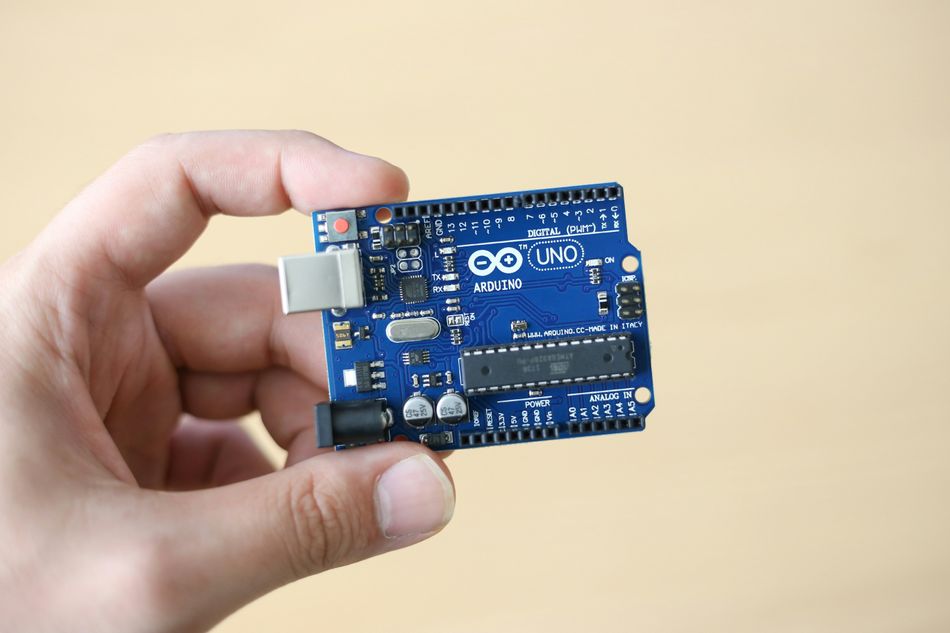
Arduino features a microcontroller, commonly from the Atmel AVR series or ARM-based processors, known for its reliability and broad application support. These boards are known for their ease of use, low power consumption, and real-time control capabilities. They excel in projects that require interacting with sensors, actuators, and other hardware peripherals. With a versatile digital and analogue I/O, Arduino is essential for projects ranging from simple tasks to complex industrial automation.
The memory variation across Arduino models — from minimal setups like 2KB of SRAM and 32KB of flash memory on basic boards such as the Arduino Uno to more robust configurations on advanced models — caters to a broad range of projects. This scalability allows Arduino to handle projects of varying complexity, whether it's operating simple sensors or managing entire home automation systems.
The integration of Arduino with popular programming languages like C and C++, along with its own Arduino IDE, makes it accessible to a wide range of users. The extensive community and wealth of resources provide support for users at all levels, facilitating learning and project troubleshooting. This strong community support is why Arduino is widely used in the educational sector and maker spaces worldwide.
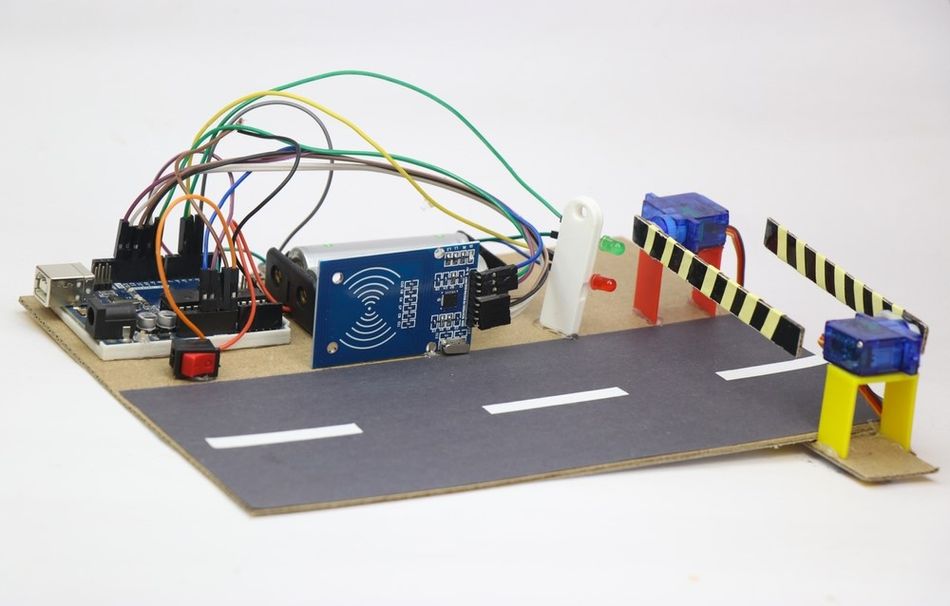
Arduino supports real-time processing with minimal latency. It responds quickly to inputs, making it ideal for time-sensitive tasks. For example, if you create an automatic plant watering system, Arduino can react instantly when soil moisture is low.
By mastering the microcontroller-based architecture, pin configurations, and programming environment of Arduino, users can bring their ideas to life in a wide range of applications.
Recommended Reading: Microcontroller Programming: Mastering the Foundation of Embedded Systems
Raspberry Pi Fundamentals
Raspberry Pi, launched in 2012, revolutionized the field of embedded computing by offering a low-cost, credit-card-sized computer that packs powerful processing capabilities. [2] This device has all the features of a standard PC – dedicated processor, graphics driver and memory and even its own operating system known as Raspberry Pi OS (earlier called Raspbian OS).
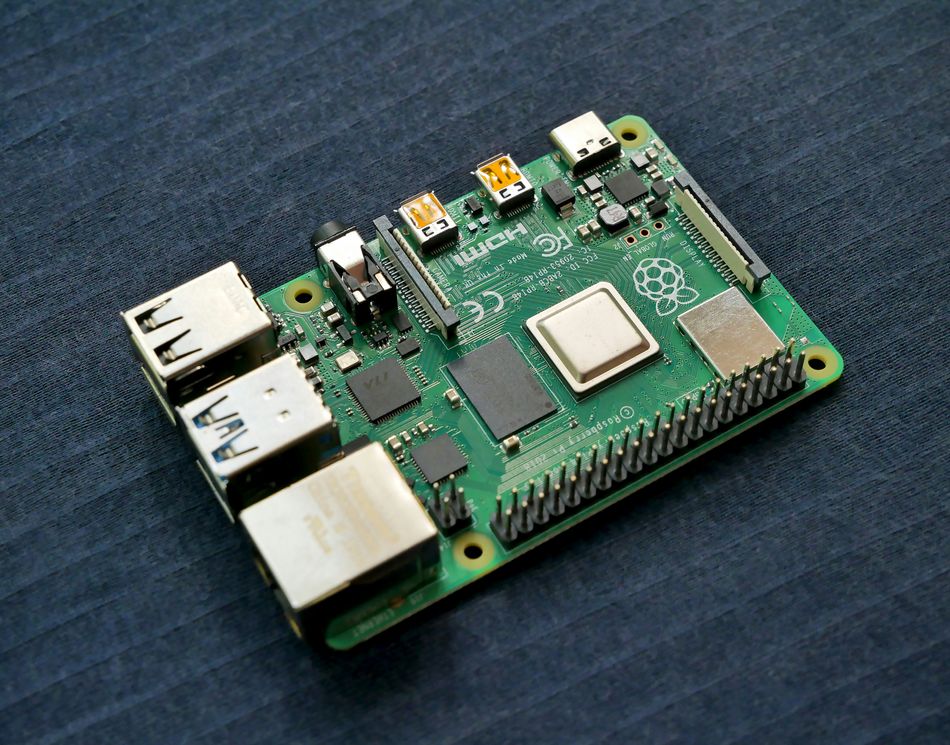
Raspberry Pi board features a System on a Chip (SoC), which integrates essential components like the CPU and GPU to balance robust performance with energy efficiency. Over the years, Raspberry Pi has evolved with increasingly powerful CPUs, progressing from single-core to quad-core processors in recent models. The latest Raspberry Pi Pico is a microcontroller too, but all the other models are microprocessors.
With configurations ranging up to 16GB of RAM in the latest Raspberry Pi 5, the device caters to increasingly complex applications. Connectivity is another feature, offering several options from USB ports and HDMI outputs to GPIO pins for highly customized extensions. This makes the Raspberry Pi suitable for various applications, from running media centres to managing sophisticated home automation systems and robotics.
Raspberry Pi board supports various operating systems, including Ubuntu (Linux distributions) and even Windows 10 IoT. Its programming environment, embracing languages like Python, Java, and C, caters to both beginners and experienced developers. For example, you can set up a media centre or a web server using Raspberry Pi. The device doesn’t provide storage but, fortunately, with microSD cards, users can store up to 32 GB of data.

The ability of Raspberry Pi (RPi) to handle networking tasks is one of its standout features. [3] Built-in Ethernet and Wi-Fi (depending on the model) allow Raspberry Pi to easily connect to the internet or other local devices. This makes it a go-to platform for projects like web servers, IoT gateways, remote access systems, and media streaming devices.
By understanding the fundamentals of Raspberry Pi, users can explore its vast potential and utilize its capabilities to create innovative electronic projects.
Recommended Reading: Add cellular connectivity to your Raspberry Pi
Differences Between Arduino and Raspberry Pi
Now that we’ve learned a thing or two about each of the platforms, let’s compare them pointing out the major differences.
| Feature | Arduino | Raspberry Pi |
| Type | Microcontroller Board | Single Board Computer |
| Operating System | No | Yes (e.g., Raspbian) |
| Processing Power | Up to 16 MHz | Up to 1.6 GHz |
| Price | Generally Less Expensive | More Expensive |
| Applications | Controlling Motors, LEDs, Sensors | Complex Operations, Software Development |
| Power Requirements | Lower | Higher |
| Power On/Off | Plug and Play | Proper Shutdown Required |
| Open-Source | Yes | Partially (software) |
| Programming Languages | C, C++ | C, C++, Python, Ruby, Scratch |
| Latest Models | GIGA R1 WiFi, Nano Every, and Portenta H7 | Raspberry Pi 5, Raspberry Pi 4 Model B, and Raspberry Pi Zero |
Both Arduino and Raspberry Pi typically require a power supply to operate. The specific power requirements may vary depending on the model and connected components. While both platforms use firmware (software embedded in hardware), the level of control and customization can differ. Arduino often provides more flexibility in modifying firmware, while Raspberry Pi may have more pre-configured options.
In summary, Arduino is well-suited for projects that involve controlling physical electronic components and require a simple, low-power solution. Raspberry Pi is a more powerful option for complex applications that require a full-fledged operating system and internet connectivity.
Recommended Reading: Microcontroller vs Microprocessor: A Comprehensive Guide to Their Differences and Applications
Advancements and Innovations: Keeping Tech at the Cutting-edge
Recent Developments in Arduino
The Arduino platform has consistently been at the forefront of innovation in the DIY electronics community. Recent advancements in its lineup, notably the GIGA R1 WiFi, Nano Every, and Portenta H7 have introduced remarkable enhancements in terms of computing power and energy efficiency.
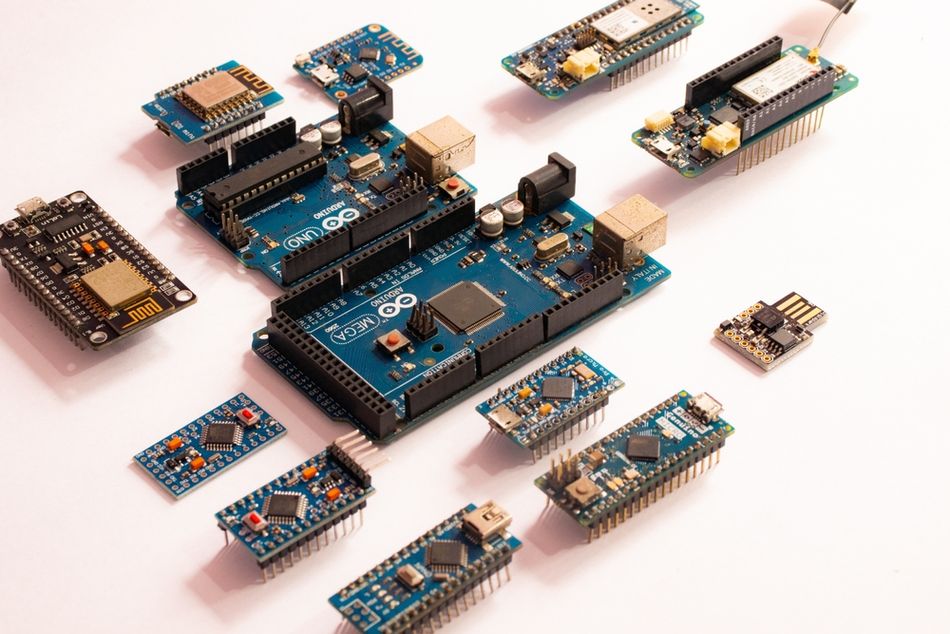
The Arduino GIGA R1 WiFi is a powerful and versatile single-board computer (SBC) designed for prototyping advanced IoT and embedded systems. Featuring a dual-core STM32H7 microcontroller, it supports complex real-time operations with enhanced processing power. With Wi-Fi and Bluetooth 5.1 connectivity, the GIGA R1 is perfect for wireless Arduino projects like smart home systems and remote sensors. Its wide range of I/O pins, including analog, digital, ADC, and PWM outputs, make it versatile for robotics, automation, and data logging. [4]
The Arduino Nano Every comes equipped with an ATMega4809 microcontroller. This represents a significant step up from the ATMega328P found in the Arduino Uno. This upgrade translates into faster processing capabilities and improved energy management, making it ideal for projects that require portability and extended battery life. It’s particularly useful for applications like environmental monitoring systems where compact and efficient operations are crucial.
The Arduino Portenta H7 is another standout addition. Its dual-core architecture, combining ARM Cortex-M7 and Cortex-M4 processors, enables it to handle complex tasks with ease. This makes it a powerful tool for developers working on advanced industrial applications or multimedia projects that demand high-performance computing.
For makers, GIGA R1 is the most powerful Arduino board ever, as it is based on the same microcontroller as the Portenta H7, the STM32H747. The Portenta X8 has one of these too, but with fewer pins.
These advancements reflect the responsive evolution of Arduino in the face of diverse user demands and technological trends. The enthusiastic reception of these models from the Arduino community highlights their practical utility. The latest developments ensure that Arduino remains a crucial player at the cutting edge of technology.
Recent Developments in Raspberry Pi
The Raspberry Pi has continually set benchmarks in democratizing computing, consistently expanding its capabilities to meet the evolving demands of industry. Over the years, the Raspberry Pi Foundation introduced new models, expanding capabilities for various applications. These range from DIY projects to advanced industrial automation and AI-based solutions.
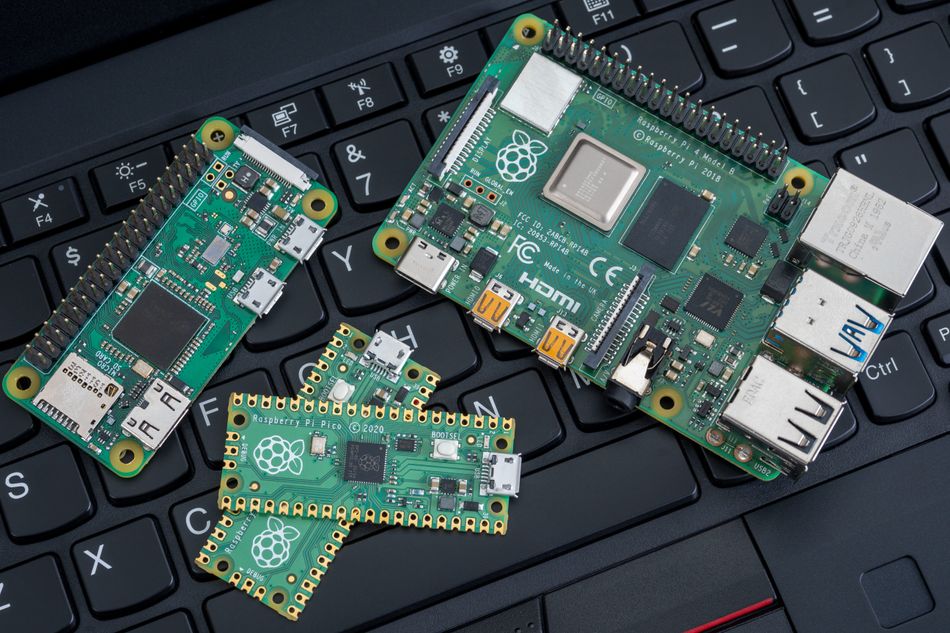
The Raspberry Pi 5 represents a significant leap in the Raspberry Pi series, offering desktop-level performance with a quad-core ARM Cortex-A76 CPU running at 2.4 GHz. This makes it highly suitable for demanding tasks like AI processing, software development, and high-performance computing. The VideoCore VII GPU supports 8K video output and HEVC decoding, elevating its use in media streaming and graphical applications. With up to 16GB LPDDR5 RAM, the Pi 5 handles memory-intensive applications like machine learning and virtualization with ease. The Raspberry Pi 5 sets a new standard for affordability and performance in single-board computing.
Raspberry Pi 4 Model B marks another significant milestone in this evolution, offering substantial advancements in both CPU and GPU performance. Equipped with the Broadcom BCM2711 processor, this model introduces quad-core Cortex-A72 (ARM v8) architecture, enabling speeds that surpass its predecessor substantially. The VideoCore VI GPU supports 4K video playback at 60 frames per second, making it ideal for media-intensive applications. The Raspberry Pi 4 is available with 2GB, 4GB, and 8GB of LPDDR4-3200 SDRAM. [5] Benchmark tests have shown that the Raspberry Pi 4 can handle computational loads up to three times faster than its predecessors.
The Raspberry Pi Pico, powered by the custom RP2040 microcontroller, marked the Raspberry Pi Foundation’s first addition to microcontrollers. Unlike previous Raspberry Pi models, which are full-fledged computers, the Pico is designed for low-power, real-time applications. Dual ARM Cortex-M0+ cores running at 133 MHz, combined with 264KB of RAM and 2MB of onboard flash memory, make it perfect for projects that require minimal energy consumption. Programmable in MicroPython or C/C++, the Pico has quickly become popular among makers for its affordability and versatility.
These are just a few examples of the recent developments in the Raspberry Pi ecosystem. The Raspberry Pi Foundation continues to innovate and expand the capabilities of its products, making them accessible and versatile for a wide range of applications.
Recommended Reading: Meet the new Raspberry Pi 5
Technological Showdown: Arduino vs Raspberry Pi in Applications
The Arduino and Raspberry Pi platforms are both highly popular in the world of DIY electronics and embedded systems, but their use cases and strengths differ significantly. While both platforms offer unique capabilities, their applications often overlap, leading to a frequent comparison between the two.
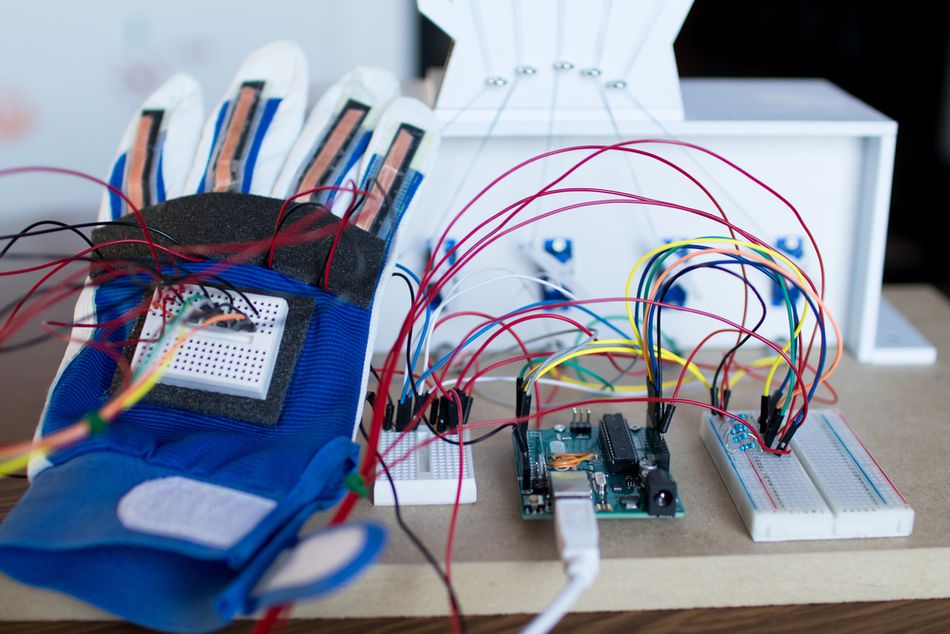
Arduino is a microcontroller-based platform that excels in real-time control and hardware interaction. Its simplicity and low power consumption make it ideal for projects requiring basic digital or analogue input/output (I/O) operations. Typical applications include robotics, sensor networks, and home automation systems, where Arduino controls motors, reads sensors, or switches relays. Its ability to operate with minimal power makes it highly suitable for battery-powered devices, IoT sensors, and wearables. With a rich ecosystem of shields and libraries, Arduino is the go-to platform for hardware control in real-time, deterministic environments.
In contrast, Raspberry Pi is a full-fledged microprocessor-based system capable of running a full operating system like Linux. Its higher processing power makes it ideal for applications that require multitasking, data processing, or network connectivity. Raspberry Pi excels in projects involving media centres, AI and machine learning, and web servers. The platform is commonly used for home automation hubs, IoT gateways, and edge computing devices that need to handle data from multiple sources or process complex algorithms.
In specific use cases, for instance, Arduino is ideal for building a weather station that relies on instantaneous sensor readings to issue alerts. Conversely, Raspberry Pi would be the choice for a home media centre that can stream high-definition content and integrate seamlessly with other IoT devices.
In terms of power consumption, Raspberry Pi models generally consume more power due to their complex processing tasks. Arduino, with its leaner efficiency, makes it cost-effective for simpler, standalone applications.
By understanding the specific advantages of each platform, developers and hobbyists can make informed decisions based on their project's requirements. This tailored approach ensures optimal functionality and efficiency in project execution.
Recommended Reading: RISC-V vs ARM: A Comprehensive Comparison of Processor Architectures
Challenges and Considerations in Choosing Between Arduino and Raspberry Pi
Choosing between Arduino and Raspberry Pi for specific projects involves considering various technical factors that could impact project success. Each platform has unique challenges that may influence its effectiveness, depending on specific project requirements.
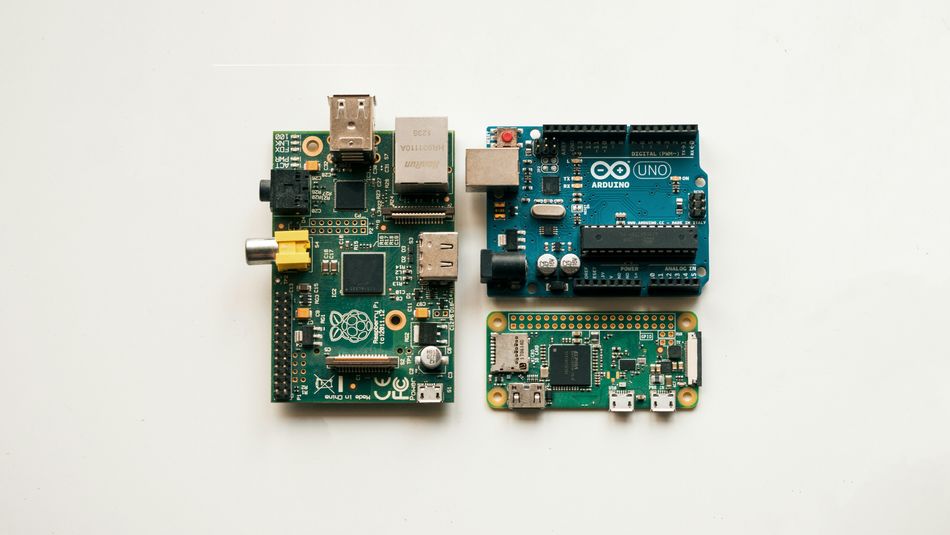
Arduino, primarily known for its simplicity and reliability in real-time applications, can struggle with processing power and memory limitations. This often becomes apparent in projects requiring complex data processing, where Arduino may not perform optimally due to its constrained computing resources. For instance, an attempt to use Arduino in a sophisticated multi-sensor environmental monitoring system might reveal these limitations.
On the other hand, Raspberry Pi offers significant processing capabilities but can face issues like overheating and SD card corruption during intensive operations. Such reliability concerns become critical in high-stakes projects, such as running continuous data analytics for a smart home system. The platform’s Linux-based configuration also adds a layer of complexity, potentially affecting the learning process for those less familiar with such systems.
Both platforms benefit from vibrant communities that provide extensive support. Arduino's community, with its beginner-friendly projects and tutorials, makes it an excellent choice for novices and educational purposes. Conversely, Raspberry Pi’s community offers deeper dives into software development and system operations, which appeals to users with more advanced technical needs.
By carefully evaluating these challenges and considerations, users can make an informed decision and ensure they select the right platform for their specific project needs.
Recommended Reading: Microcontroller-Based IoT Development Kits: Powering the Next Generation of IoT Solutions
Conclusion
Arduino and Raspberry Pi, each with its unique strengths, offer versatile solutions for diverse projects. Arduino excels in environments requiring robust, real-time response making it ideal for simple automated tasks and teaching fundamental electronics. Raspberry Pi offers substantial computational power and multimedia capabilities, making it suitable for complex projects in need of extensive data processing and connectivity.
Choosing between these platforms requires careful consideration of project needs, team expertise, and future scalability. This strategic decision not only impacts project success but also contributes to broader technological progress. As Arduino and Raspberry Pi continue to evolve, understanding their capabilities and potential applications will be crucial for staying at the forefront of innovation.
FAQs
Q. What is Arduino, and in what types of projects is it commonly used?
A. Arduino is a microcontroller board primarily designed for interacting with the physical world. It's equipped with general-purpose input/output (GPIO) pins that can be used to control components like LEDs, motors, and sensors.
Q. What is Raspberry Pi, and in what types of projects is it commonly used?
A. Raspberry Pi, often referred to as a mini-computer, is a more powerful SBC equipped with a CPU, GPU, and a full-fledged operating system like Ubuntu. It can handle complex tasks such as running software applications, streaming media, and even acting as a small server.
Q. What are the power consumption differences between Arduino and Raspberry Pi?
A. Arduino is typically preferred for its low power consumption, making it ideal for energy-efficient projects. On average, Arduino circuit boards consume between 20-50 milliamps during operation. In contrast, Raspberry Pi units generally require significantly more power, typically around 700 milliamps to 1 amp, depending on the model and the complexity of tasks being performed.
Q. Which platform is better for IoT projects and why?
A. Arduino is preferable for simpler IoT applications due to its ease of integration with various sensors and lower energy consumption, often used in applications like smart gardening systems. Raspberry Pi is utilized well in complex IoT setups, such as home automation systems that require handling multiple data streams and performing intensive tasks.
Q. How do the programming environments and languages differ between Arduino and Raspberry Pi?
A. Arduino offers a straightforward development environment with its own Integrated Development Environment (IDE) and primarily uses C++. This makes it accessible for beginners and efficient for simple embedded applications. On the other hand, Raspberry Pi supports a variety of programming languages like Python, JavaScript, and C++ due to its Linux-based OS and caters well to more advanced programming needs.
References
[1] O’Reilly Media. Chapter 1. The Arduino Family [Cited 2024 September 05] Available at: Link
[2] ZDNET. The inside story of the Raspberry Pi [Cited 2024 September 05] Available at: Link
[3] Leo Rover Blog. Raspberry Pi or Arduino – When to Choose Which? [Cited 2024 September 05] Available at: Link
[4] Jay Con. Raspberry Pi vs Arduino: Which One Should You Choose? [Cited 2024 September 05] Available at: Link
[5] Raspberry Pi. Raspberry Pi 4 Tech Specs [Cited 2024 September 05] Available at: Link
Table of Contents
IntroductionUnpacking the Basics: Introduction to Key TechnologiesArduino EssentialsRaspberry Pi FundamentalsDifferences Between Arduino and Raspberry PiAdvancements and Innovations: Keeping Tech at the Cutting-edgeRecent Developments in ArduinoRecent Developments in Raspberry PiTechnological Showdown: Arduino vs Raspberry Pi in ApplicationsChallenges and Considerations in Choosing Between Arduino and Raspberry PiConclusionFAQsReferences